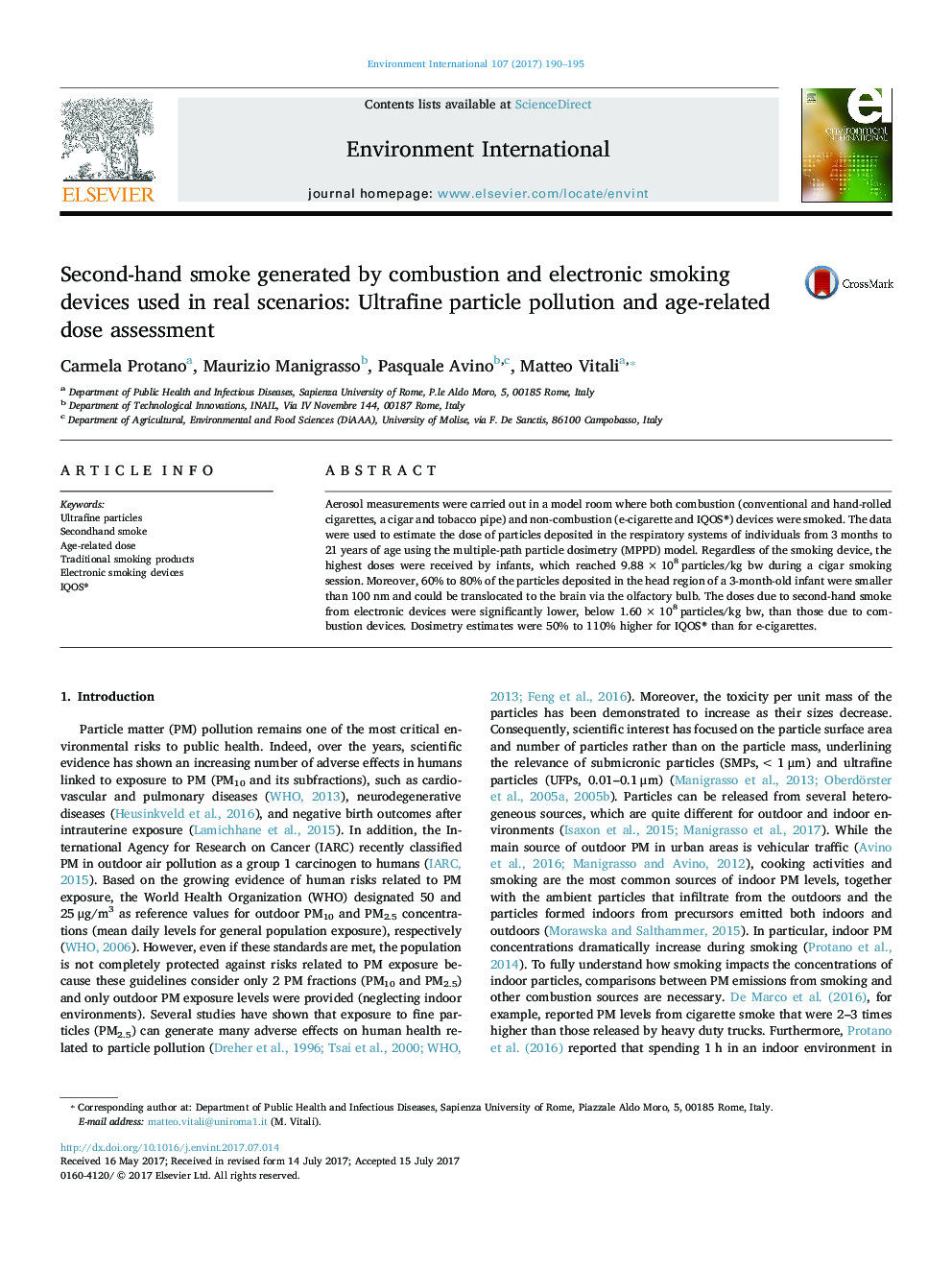| Article ID | Journal | Published Year | Pages | File Type |
|---|---|---|---|---|
| 5748315 | Environment International | 2017 | 6 Pages |
Abstract
Aerosol measurements were carried out in a model room where both combustion (conventional and hand-rolled cigarettes, a cigar and tobacco pipe) and non-combustion (e-cigarette and IQOS®) devices were smoked. The data were used to estimate the dose of particles deposited in the respiratory systems of individuals from 3Â months to 21Â years of age using the multiple-path particle dosimetry (MPPD) model. Regardless of the smoking device, the highest doses were received by infants, which reached 9.88Â ÃÂ 108Â particles/kg bw during a cigar smoking session. Moreover, 60% to 80% of the particles deposited in the head region of a 3-month-old infant were smaller than 100Â nm and could be translocated to the brain via the olfactory bulb. The doses due to second-hand smoke from electronic devices were significantly lower, below 1.60Â ÃÂ 108Â particles/kg bw, than those due to combustion devices. Dosimetry estimates were 50% to 110% higher for IQOS® than for e-cigarettes.
Keywords
Related Topics
Life Sciences
Environmental Science
Environmental Chemistry
Authors
Carmela Protano, Maurizio Manigrasso, Pasquale Avino, Matteo Vitali,
